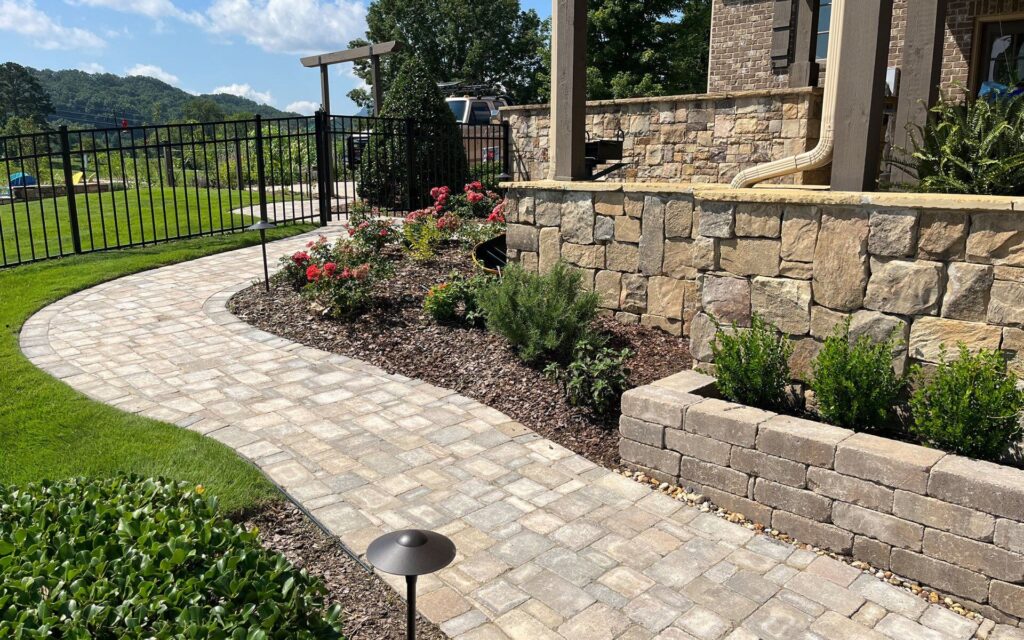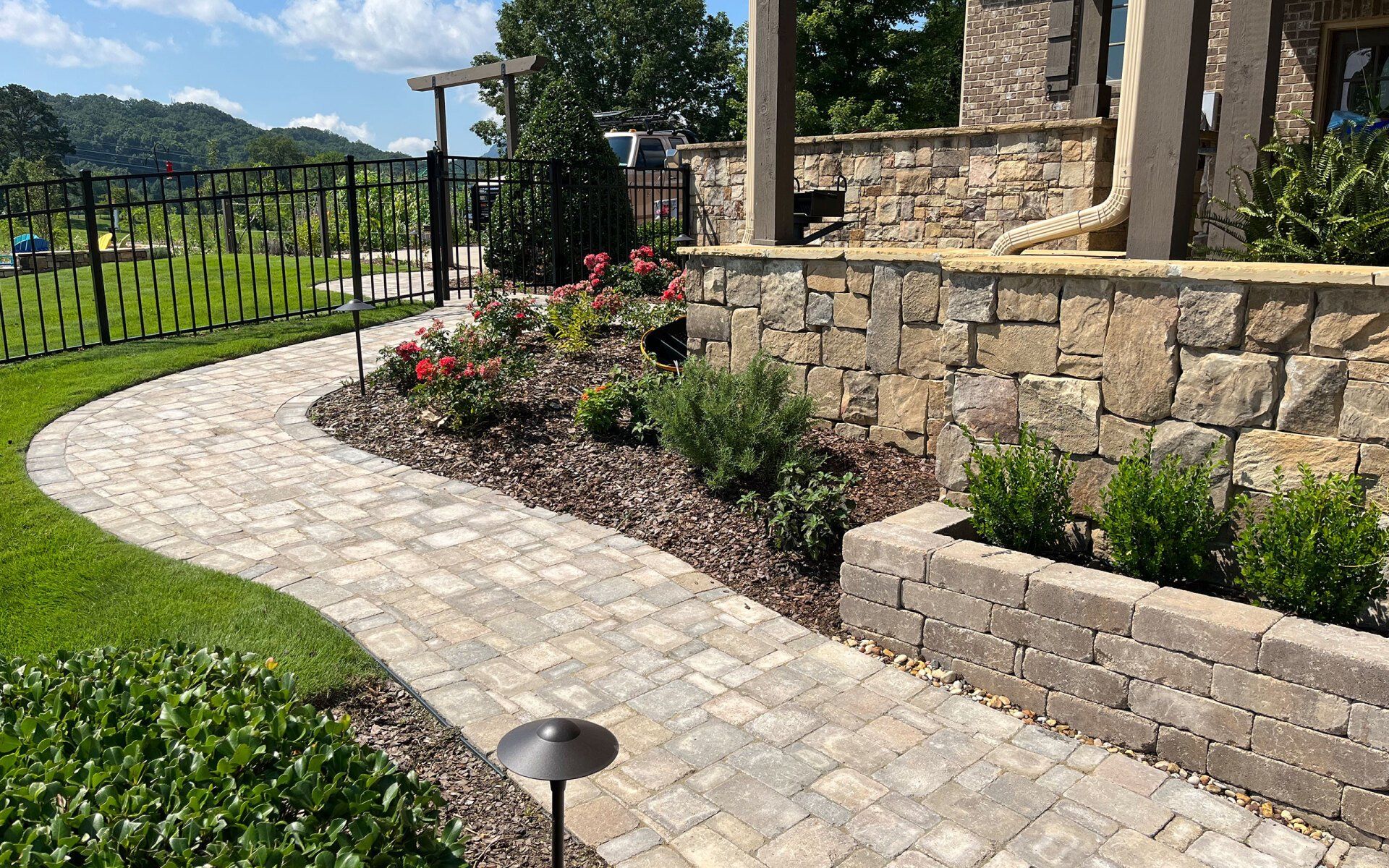
Southeast Landscape: A Comprehensive Guide to Design, Maintenance, and Sustainability
The southeast landscape of the United States, a region renowned for its lush vegetation, diverse ecosystems, and unique climate, presents both opportunities and challenges for homeowners, landscape architects, and environmental stewards. From the subtropical coastal plains to the Appalachian highlands, understanding the nuances of this region is crucial for creating sustainable, beautiful, and functional outdoor spaces. This article delves into the key considerations for designing, maintaining, and ensuring the long-term health of the southeast landscape.
Understanding the Southeast Climate and Its Impact on Landscape Design
The southeast landscape is characterized by a humid subtropical climate, with hot, humid summers and mild winters. This climate dictates the types of plants that thrive, the potential for pest and disease outbreaks, and the water management strategies required. High humidity levels can lead to fungal diseases, while mild winters may not provide enough chilling hours for certain fruit trees. Understanding these climatic factors is paramount for selecting appropriate plant species and implementing effective maintenance practices.
Rainfall Patterns and Drainage
The Southeast receives abundant rainfall throughout the year, but distribution can vary significantly. Coastal areas are more prone to heavy rainfall events, including hurricanes and tropical storms. Proper drainage is essential to prevent waterlogging, soil erosion, and root rot. Consider incorporating features such as rain gardens, swales, and permeable pavements to manage stormwater runoff effectively. These elements can enhance the southeast landscape aesthetically while also providing environmental benefits.
Temperature Fluctuations and Plant Hardiness
While the Southeast generally experiences mild winters, occasional cold snaps can damage sensitive plants. Selecting plants that are hardy to the region’s specific climate zone is crucial for long-term success. Native plants are often the best choice, as they are adapted to the local conditions and require less maintenance. Understanding plant hardiness zones and microclimates within your property will help you choose the right plants for the right places in your southeast landscape.
Designing Your Southeast Landscape: Key Considerations
Designing a successful southeast landscape involves careful planning and consideration of various factors, including site conditions, aesthetic preferences, and environmental goals. Here are some key considerations to keep in mind:
Site Analysis and Soil Assessment
Before embarking on any landscaping project, conduct a thorough site analysis to assess soil type, drainage patterns, sun exposure, and existing vegetation. A soil test can reveal nutrient deficiencies or pH imbalances that need to be addressed before planting. Understanding these site-specific conditions will inform your plant selection and design decisions.
Plant Selection and Placement
Choosing the right plants is crucial for creating a thriving southeast landscape. Opt for native or adapted species that are well-suited to the local climate and soil conditions. Consider the mature size and shape of plants to ensure they have adequate space to grow without overcrowding. Group plants with similar water and light requirements together to simplify maintenance. Using a variety of plants will enhance the biodiversity and resilience of your southeast landscape.
Hardscape Elements and Design
Hardscape elements, such as patios, walkways, and retaining walls, can add structure and functionality to your southeast landscape. Choose materials that complement the natural surroundings and are durable enough to withstand the region’s climate. Consider incorporating permeable paving materials to reduce stormwater runoff and create a more sustainable landscape. Design your hardscape elements to integrate seamlessly with the surrounding plant life, creating a cohesive and visually appealing outdoor space.
Maintaining Your Southeast Landscape: Best Practices
Proper maintenance is essential for keeping your southeast landscape healthy and beautiful. Here are some best practices to follow:
Watering and Irrigation
Watering deeply and infrequently is generally better than frequent, shallow watering. This encourages deep root growth, making plants more resilient to drought. Consider installing a drip irrigation system to deliver water directly to the roots of plants, minimizing water waste. Monitor soil moisture levels regularly and adjust your watering schedule accordingly. During periods of heavy rainfall, reduce or eliminate supplemental watering.
Fertilization and Soil Amendments
Fertilize your plants according to their specific needs and soil test results. Avoid over-fertilizing, as this can lead to nutrient imbalances and environmental pollution. Use slow-release fertilizers or organic amendments to provide a steady supply of nutrients. Amend the soil with compost or other organic matter to improve its structure, drainage, and nutrient-holding capacity. A healthy soil is the foundation of a healthy southeast landscape.
Pruning and Trimming
Prune your plants regularly to maintain their shape, remove dead or diseased branches, and promote healthy growth. The timing of pruning depends on the species of plant. Generally, it’s best to prune flowering shrubs after they bloom and deciduous trees during the dormant season. Use sharp, clean pruning tools to prevent the spread of diseases. Trimming hedges and shrubs regularly will maintain their desired shape and density.
Pest and Disease Management
The southeast landscape is susceptible to a variety of pests and diseases. Monitor your plants regularly for signs of infestation or infection. Use integrated pest management (IPM) techniques to control pests and diseases in an environmentally responsible manner. This may involve using beneficial insects, horticultural oils, or other non-toxic methods. If chemical controls are necessary, choose products that are specifically labeled for the target pest or disease and follow the instructions carefully. Prevention is key to minimizing pest and disease problems in your southeast landscape.
Sustainable Landscaping Practices for the Southeast
Creating a sustainable southeast landscape involves minimizing environmental impact, conserving resources, and promoting biodiversity. Here are some key sustainable landscaping practices:
Water Conservation
Implement water-wise landscaping techniques to reduce water consumption. Choose drought-tolerant plants, install efficient irrigation systems, and use mulch to conserve soil moisture. Collect rainwater in rain barrels or cisterns for irrigation purposes. Reduce the amount of lawn area and replace it with drought-tolerant groundcovers or native plant beds. These practices will help conserve water and reduce your water bill in your southeast landscape.
Soil Health and Conservation
Protect and improve soil health by minimizing soil disturbance, adding organic matter, and using cover crops. Avoid using synthetic fertilizers and pesticides, which can harm beneficial soil organisms. Prevent soil erosion by planting groundcovers, installing erosion control blankets, and using terracing on slopes. Healthy soil is essential for a thriving southeast landscape.
Plant Diversity and Native Plants
Promote plant diversity by incorporating a variety of native plants into your landscape. Native plants are adapted to the local climate and soil conditions, require less maintenance, and provide habitat for native wildlife. Avoid planting invasive species, which can outcompete native plants and disrupt ecosystems. A diverse and native southeast landscape is more resilient to pests, diseases, and environmental stresses.
Wildlife Habitat
Create a wildlife-friendly southeast landscape by providing food, water, shelter, and nesting sites for birds, butterflies, and other beneficial wildlife. Plant native trees, shrubs, and wildflowers that provide food and cover for wildlife. Install bird feeders, bird baths, and butterfly houses. Avoid using pesticides, which can harm beneficial insects. A wildlife-friendly landscape is a beautiful and ecologically valuable asset.
Reducing Lawn Area
Traditional lawns require significant inputs of water, fertilizer, and pesticides. Reduce the amount of lawn area in your southeast landscape and replace it with more sustainable alternatives, such as native plant beds, groundcovers, or permeable paving. Consider using a low-maintenance grass species that requires less mowing and watering. Reducing lawn area is a simple way to create a more sustainable and environmentally friendly landscape.
The Future of Southeast Landscape Design
The future of southeast landscape design will likely focus on sustainability, resilience, and ecological restoration. As climate change continues to impact the region, there will be an increasing emphasis on designing landscapes that can withstand extreme weather events, conserve water, and support biodiversity. Native plants will play an increasingly important role in landscape design, as they are best adapted to the local climate and provide essential habitat for wildlife. Innovative technologies, such as smart irrigation systems and green infrastructure, will be used to create more efficient and sustainable landscapes. The southeast landscape of the future will be a beautiful and functional asset that enhances the environment and improves the quality of life for residents.
[See also: Native Plants for Southeast Landscapes]
[See also: Sustainable Landscaping Techniques]
By understanding the unique characteristics of the southeast landscape and implementing sustainable design and maintenance practices, you can create an outdoor space that is both beautiful and environmentally responsible. The southeast landscape offers a wealth of opportunities for creating stunning and sustainable outdoor environments.

